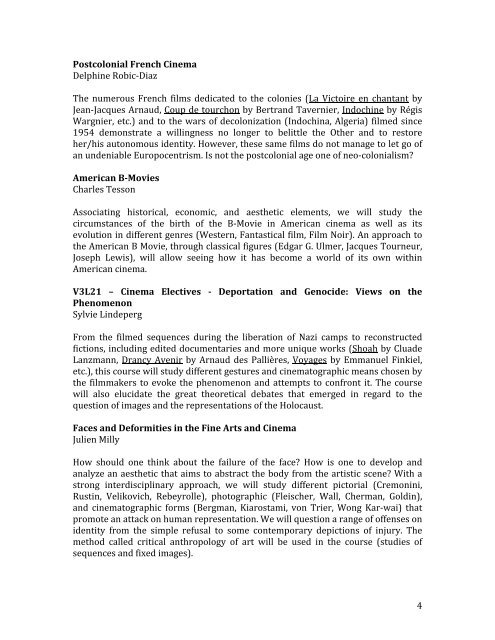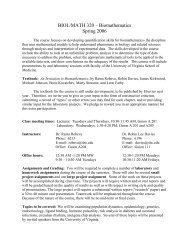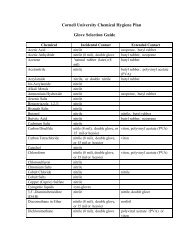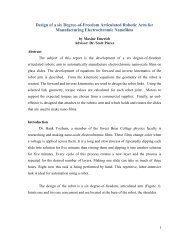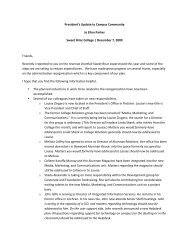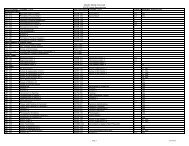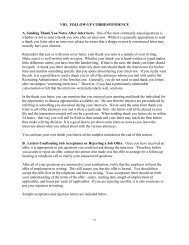Brochure - English translations of course offerings
Brochure - English translations of course offerings
Brochure - English translations of course offerings
Create successful ePaper yourself
Turn your PDF publications into a flip-book with our unique Google optimized e-Paper software.
Postcolonial French Cinema <br />
Delphine Robic-‐Diaz <br />
The numerous French films dedicated to the colonies (La Victoire en chantant by <br />
Jean-‐Jacques Arnaud, Coup de tourchon by Bertrand Tavernier, Indochine by Régis <br />
Wargnier, etc.) and to the wars <strong>of</strong> decolonization (Indochina, Algeria) filmed since <br />
1954 demonstrate a willingness no longer to belittle the Other and to restore <br />
her/his autonomous identity. However, these same films do not manage to let go <strong>of</strong> <br />
an undeniable Europocentrism. Is not the postcolonial age one <strong>of</strong> neo-‐colonialism? <br />
American B-Movies <br />
Charles Tesson <br />
Associating historical, economic, and aesthetic elements, we will study the <br />
circumstances <strong>of</strong> the birth <strong>of</strong> the B-‐Movie in American cinema as well as its <br />
evolution in different genres (Western, Fantastical film, Film Noir). An approach to <br />
the American B Movie, through classical figures (Edgar G. Ulmer, Jacques Tourneur, <br />
Joseph Lewis), will allow seeing how it has become a world <strong>of</strong> its own within <br />
American cinema. <br />
V3L21 – Cinema Electives - Deportation and Genocide: Views on the <br />
Phenomenon <br />
Sylvie Lindeperg <br />
From the filmed sequences during the liberation <strong>of</strong> Nazi camps to reconstructed <br />
fictions, including edited documentaries and more unique works (Shoah by Cluade <br />
Lanzmann, Drancy Avenir by Arnaud des Pallières, Voyages by Emmanuel Finkiel, <br />
etc.), this <strong>course</strong> will study different gestures and cinematographic means chosen by <br />
the filmmakers to evoke the phenomenon and attempts to confront it. The <strong>course</strong> <br />
will also elucidate the great theoretical debates that emerged in regard to the <br />
question <strong>of</strong> images and the representations <strong>of</strong> the Holocaust. <br />
Faces and Deformities in the Fine Arts and Cinema <br />
Julien Milly <br />
How should one think about the failure <strong>of</strong> the face? How is one to develop and <br />
analyze an aesthetic that aims to abstract the body from the artistic scene? With a <br />
strong interdisciplinary approach, we will study different pictorial (Cremonini, <br />
Rustin, Velikovich, Rebeyrolle), photographic (Fleischer, Wall, Cherman, Goldin), <br />
and cinematographic forms (Bergman, Kiarostami, von Trier, Wong Kar-‐wai) that <br />
promote an attack on human representation. We will question a range <strong>of</strong> <strong>of</strong>fenses on <br />
identity from the simple refusal to some contemporary depictions <strong>of</strong> injury. The <br />
method called critical anthropology <strong>of</strong> art will be used in the <strong>course</strong> (studies <strong>of</strong> <br />
sequences and fixed images). <br />
<br />
4


